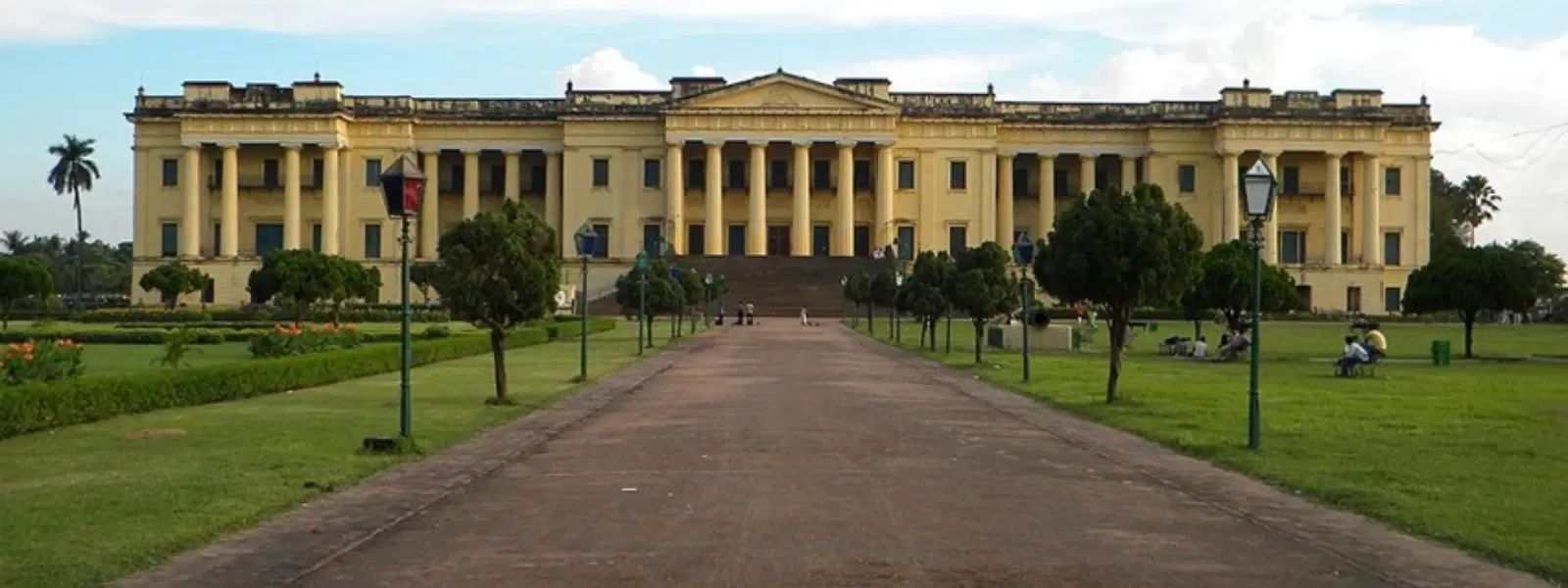
Flights
•04 min read

Step into the grandeur of Hazarduari Palace Murshidabad, where history whispers through a maze of thousand doors and tales of a regal past come to life. This iconic palace, with its unique architecture and rich heritage, stands as a beacon among Murshidabad tourist attractions. In this guide, you will learn how to explore Hazarduari Palace like a seasoned traveler, delving into its fascinating history, awe-inspiring architecture, museum treasures, and practical visit tips for an unforgettable journey into Bengal's royal past.
Hazarduari Palace was commissioned by Nawab Nazim Humayun Jah, an influential figure in the history of Bengal. Constructed between 1829 and 1837, the palace was designed by the renowned British architect Duncan Macleod. The building's neoclassical Italianate style is a blend of European grandeur and local architectural nuances, making it one of the most striking examples of Murshidabad royal palace architecture. Its design was not just meant to impress; it was a thoughtful combination of functionality and decorative splendor, intended to reflect the status and sophistication of the Nawabs.
The palace holds immense historical significance, representing the zenith of Nawabi culture and governance in Bengal. It served as a center of power during the reign of the Nawabs and later underwent a major transformation into a museum under the Archaeological Survey of India. Today, visitors can witness a treasure trove of artifacts, a remnant of a bygone era that shaped the cultural and political landscape of the region.
One of the most captivating aspects of Hazarduari Palace is its thousand doors design. Among these, only 100 are real, while the remaining 900 are false doors. This ingenious architectural element was not a mere facade; it added depth and mystery to the structure. The interplay of real and false doors creates an intriguing visual narrative, inviting visitors to ponder the symbolic representation of doors—each one a gateway to the unknown and a reflection of the palace’s layered history.
As you wander through the palace, you'll be struck by its grand staircase that majestically rises into the inner sanctum of the building. Massive chandeliers hang like luminous jewels, casting a warm glow over intricate carvings and decorative motifs that embody the confluence of European styles and Indian craftsmanship. Every corner of Hazarduari Palace is a visual delight, offering insight into the meticulous artistry and design innovation that went into its creation.

The palace now houses a museum that is a repository of the region’s cultural heritage. Here, you can immerse yourself in an exquisite collection of rare artifacts, including paintings, manuscripts, and weapons from the Nawabi era. Notable exhibits such as the ivory throne and vintage European furniture offer a tangible connection to the opulence and refined tastes of a regal period. The museum not only reflects the artistic excellence of a bygone time but also showcases the evolution of local craftsmanship through centuries.
The magic of Hazarduari Palace extends beyond its walls. Alongside the museum, you will find other treasures like Bara Kothi and Nizamat Kila within the palace complex. Moreover, the immediate vicinity of the palace is dotted with other Murshidabad heritage sites, such as the impressive Katra Masjid and the mesmerizing banks of the Bhagirathi River. These landmarks collectively provide a comprehensive picture of the region’s historical and cultural fabric.
For the most pleasant experience, plan your visit to Hazarduari Palace during the cooler months from October to February. The comfortable weather during this time allows you to fully appreciate the palace's beauty and explore its surroundings without the discomfort of extreme heat.
The palace is open to visitors during regular hours, but do note that it is typically closed on Fridays. Ticket prices are quite affordable, with rates generally around ₹25 for Indian citizens and approximately ₹250 for foreign visitors. Occasionally, there may be special discounts or guidelines for visitors, so it is wise to check the latest information before you plan your trip.
Getting to the palace is easy, with several transportation options available. Trains and buses provide economical choices, while private vehicles offer a more flexible travel experience. For those requiring overnight stays, accommodations in the area provide a comfortable resting place to enhance your exploration of Murshidabad. When choosing where to stay, prioritize locations that offer ease of transit to key tourist attractions—you are here to immerse yourself in history, after all.

Murshidabad is brimming with sites that are essential to any itinerary focused on Bengal historical landmarks. Beyond Hazarduari Palace, don't miss the spiritual charm of Katra Masjid, the scenic views at Motijheel, and the historical layers of Kathgola Palace. Each of these sites contributes to a richer understanding of the region's past and its influence on contemporary culture.
To truly appreciate Murshidabad, take the time to engage with local guides. They will reveal hidden stories and lesser-known facts about Hazarduari Palace and the surrounding heritage sites. Savoring local Bengali cuisine is another must—markets offer an array of traditional foods and handcrafted souvenirs that capture the essence of the region. Living these experiences makes for a journey that touches all your senses, transforming a simple trip into a cultural adventure.
Nawab Nazim Humayun Jah commissioned the construction of Hazarduari Palace, which was designed by British architect Duncan Macleod.
Hazarduari Palace is closed on Fridays.
The palace features 900 false doors out of its iconic "thousand doors" design.
The ticket price for Hazarduari Museum varies, but it is typically around ₹25 for Indian citizens and ₹250 for foreign visitors.
Hazarduari Palace Murshidabad stands as a testament to the grandeur and rich history of Bengal. From its majestic thousand doors to the intricate blend of European and Indian architectural styles, the palace offers a window into a regal past that continues to fascinate history enthusiasts and architecture lovers alike. With practical tips and insights outlined in this guide, you now have the tools to explore this cultural landmark like a pro and fully immerse yourself in the wonders of Murshidabad.